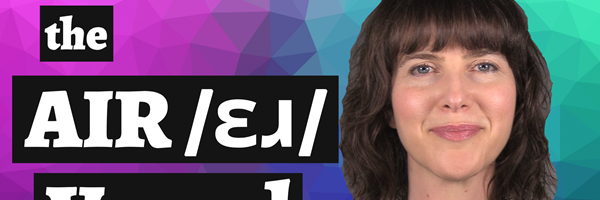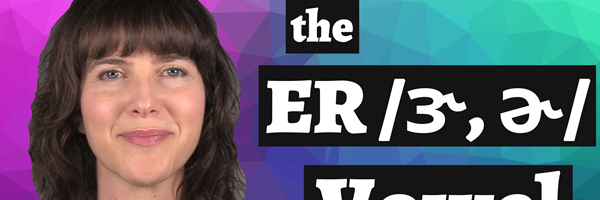(Video Transcript)
The EAR /ɪɹ/ vowel is in the words year, appear, and here. EAR. I just described the EAR sound as a vowel. You may be thinking - there’s an R in that vowel - isn’t the R sound a consonant? Well...the R sound is both a consonant and vowel, depending on where it occurs in the word. I discussed this concept in a previous video called An Introduction to R-colored Vowels, and if you want more background information about the R-colored vowels, I recommend that you watch that video first.
The two sounds in the EAR vowel
You should feel movement in your articulators as you say EAR. EEAAARRRR. Because the EAR vowel is made up of two sounds: the IH /ɪ/ vowel plus the R sound /ɹ/. EAR. EEEE--RRRRR. EAR.
You have probably noticed that the IH /ɪ/ vowel in EAR doesn’t sound like the pure IH vowel. This is because the R sound influences the way the IH vowel is pronounced. The tongue pulls up a little bit more in the EAR vowel than it does when IH is said by itself. This is where these vowels get their name: R-colored vowels. The R influences the way the vowel is pronounced.
Let’s take a closer look at the EAR vowel by itself and in the word year.
How to make the EAR vowel
To make the EAR vowel, the tongue is high and wide in the mouth. The tongue tip is down, behind the bottom front teeth. The jaw is open just a little bit, and the lips spread. Then as you progress to the R sound, the tongue pulls back and the sides of the tongue push against the inside of the upper back teeth or along the upper gum line. The lips push forward, into a rounded position. There is little to no movement in the jaw.
Stressed EAR vowel
Now you’ll see EAR in the word year. At the beginning of the vowel, the tongue is high and wide, with the tip down. Then as you progress to the R sound, the tongue pulls back and pushes against the inside of the upper back teeth. The lips push forward.
Stressed EAR vs. Unstressed EAR
When EAR is in a stressed syllable, the pitch of the voice glides up and then down, and the vowel is said longer and louder. EAR. Year. But in an unstressed syllable, the pitch of the voice is flatter, and the vowel is said faster. EAR. This is common in American English. Unstressed syllables are usually pronounced quicker than stressed syllables. EAR is unstressed in a word like nearby.
The pictures on the top show the stressed EAR vowel in the word year, and the pictures on the bottom show the unstressed EAR vowel in the word nearby. There isn’t much difference between the stressed and unstressed positions at the end of the vowel, but notice the difference in lip placement at the beginning of the vowel. The lips are spread more in the stressed position than they are in the unstressed position. This is typical, as unstressed syllables are often not given the full pronunciation because they are said faster than stressed syllables.
Stressed EAR. Year. EAR. Unstressed EAR. Nearby. EAR.
EAR vowel practice words and sentences
Here are some practice words and sentences.
Hear. EAR. Hear.
I can’t hear you - please speak up.
Career. EAR. Career.
Teaching is a good career.
Deer. EAR. Deer.
I saw a deer outside.
Severe. EAR. Severe.
The damage from the rainstorm was severe.
Disappear. EAR. Disappear.
The magician made the rabbit disappear.
Clear. EAR. Clear.
I need to clear off my desk.
Thanks so much for watching! And I'd love to hear from you - contact me to learn how we can work together to perfect your American English pronunciation!



